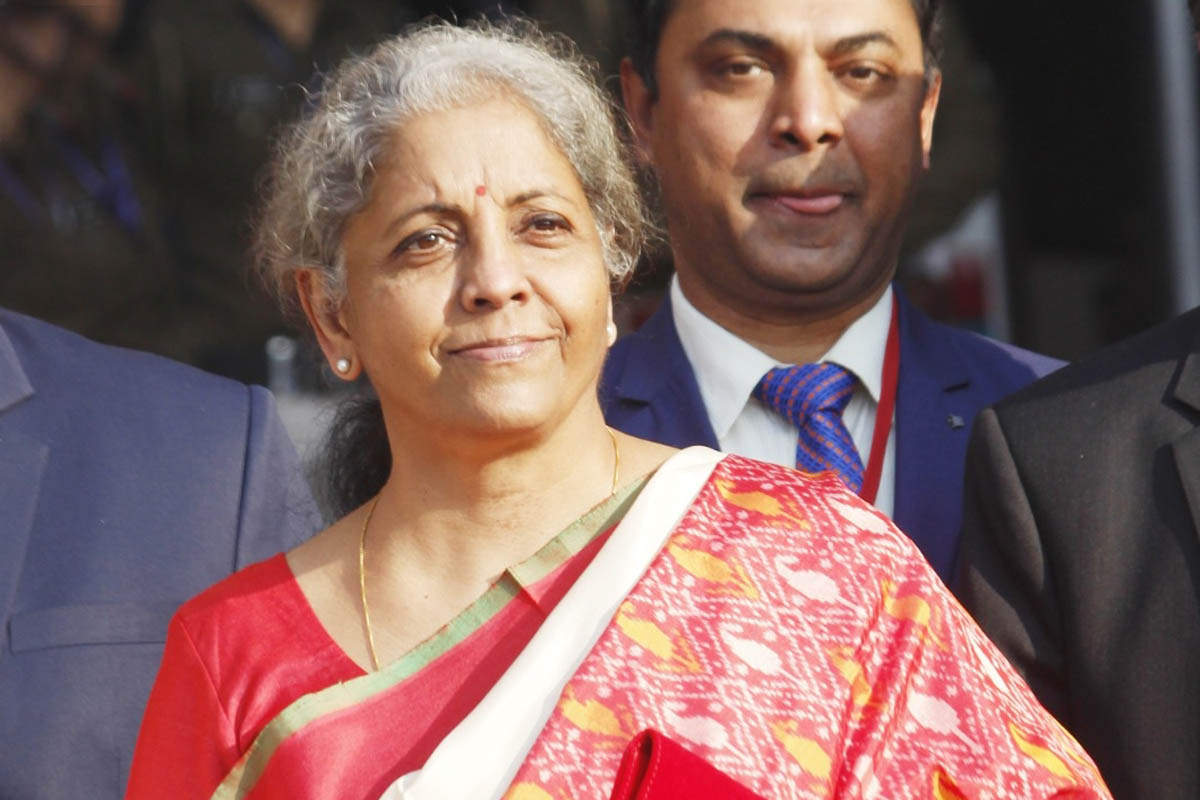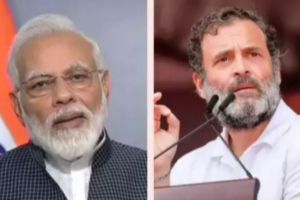In the first budget of this decade presented in the backdrop of an unprecedented 7.7 per cent contraction of the economy battered by a stubborn pandemic, the Finance Minister Ms Nirmala Sitharaman has done a commendable job. True to her pre-budget promise that the government would look beyond fiscal deficit to revive Asia’s third-largest economy, she has delivered an almost tax free, investment oriented, clean and transparent budget, preferring economic revival and growth over fiscal prudence and deficits, resisting the temptation of extreme responses usually warranted by extreme circumstances like imposing heavy taxes.
Save a few import duty tweaks to protect the domestic industry with rationalisation of customs duty and an Agriculture Infrastructure and Development Cess on specified goods, there were no new taxes in the budget. To push growth to 11 per cent in the next fiscal as highlighted by the Economic Survey, all that is expected of a prudent FM in the given circumstances has been done, even though the growth expectation seems a tad too optimistic.
The stock market cheered it full throttle, with the Sensex surging by 2315 points ~ it has now crossed the 50000 mark. With deficit for the current fiscal ballooning from the budgeted Rs 7.96 lakh crore or 3.5 per cent of GDP, to Rs 18.5 lakh crore, or 9.5 per cent in the revised estimates (RE), fiscal deficit for 202122 is now pegged at Rs 15 lakh crore, or 6.8 per cent of the GDP, to be financed mainly through market borrowings (Rs 9.7 lakh crore) and drawing on the pool of small savings (Rs 3.9 lakh crore).
Fearing higher inflation after the expansionary budget, the bond yield has already tightened and the cost of borrowing will certainly go up. The 15th Finance Commission, whose report was also placed in the Parliament along with the budget, has suggested a roadmap according to which by 2025-26, the fiscal deficit should be brought down to 4.5 per cent of GDP, which will be a tough task for any government.
Ms Sitharaman must also be commended for a transparent budget by disclosing the off-budget borrowing of Rs 1.26 lakh crore and promising to further bring it down to only Rs 30,000 crore in 2021-22 ~ this is one reason why the fiscal deficit has soared so much. She also promised that the National Small Savings Fund would no longer be used to finance food subsidy bill of FCI in 2021-22. This will restore the fiscal marksmanship hitherto absent in our budgets and restore the confidence of investors and rating agencies alike.
The unprecedented pandemic has knocked India off its fiscal consolidation path for the next few years and revival of the economy remains the primary concern of the government. To jumpstart the revival process, the FM has increased capital expenditure by almost 26 per cent to Rs 5.54 lakh crore. But the proposed increase in capex will be at the expense of revenue expenditure while keeping the aggregate expenditure practically unchanged ~ Rs 34.8 lakh crore in 2021-22 as against Rs 34.5 lakh crore in 2020-21 RE.
Budgetary allocations for MNREGS has been cut by more than a third, and expenditure on subsidies has been reduced across the board ~ by almost 60 per cent on fertilisers braving the ongoing protests of the farmers, 50 per cent on petroleum and LPG, and 40 per cent on food ~ to release the required capex funds. Allocations to the welfare for the elderly poor under the National Social Assistance Programme have also been reduced drastically.
As a result, the revenue expenditure net of interest payments will in fact decrease by 8.6 per cent compared to the 2020-21 RE. The nominal GDP growth rate has been pegged at 14.4 per cent assuming a moderate inflation, while 17 per cent tax increases have been assumed implying a tax buoyancy of 1.2 per cent which again may be an ambitious target, given the effect of the pandemic from which the economy is recovering in a Vshaped trajectory as per the Economic Survey.
While taxes will yield Rs 15.5 lakh crore, proceeds from the disinvestment of public sector undertakings will yield Rs 1.75 lakh crore, less than the current budget estimate (BE) of Rs 2.1 lakh crore against which the actual receipt was only Rs 32,000 crore due to the disruption caused by Covid. Several PSUs will be on the block including BPCL, Air India, Shipping Corporation, Container Corporation, IDBI Bank, BEML, Pawan Hans and Neelachal Ispat Nigam which were slated for disinvest during the current fiscal. The biggest to watch of course will be the IPO of the insurance behemoth LIC.
The FM has also promised to privatise two Public Sector Banks and one General Insurance company ~ this indeed will be turning the full circle on the bank nationalisation launched in 1969. She stated emphatically that a ‘bare minimum’ number of CPSEs will be maintained only on strategic sectors, that is, atomic energy, space and defence, transport and telecommunications, power, petroleum, coal and other minerals, besides banking, insurance and financial services.
In my book “Public Sector Enterprises in India: Evolution, Privatisation and Reforms” (Sage 2020), I have argued that while the number of CPSEs need to be reduced drastically, their debureaucratisation and depoliticisation are much more imperative than privatisation for their rejuvenation. Even in the strategic sectors, if we want to reap the benefits from the remaining CPSEs, it would be essential to relax the excessive government controls over them by separating the government’s roles as their owner, policymaker and regulator.
This can be done by creating an appropriate holding structure, following the example of Temasek Holdings in Singapore. In the present form where they lack real autonomy and are subject to the caprices of the bureaucracy, they will always deliver suboptimally. On the expenditure side, as expected, health expenditure will get a 137 per cent hike over last year’s BE to improve our badly underresourced public healthcare system whose weaknesses were severely exposed by the pandemic.
To achieve the optimal results, states must also improve their health infrastructure. The hike in health expenditure includes a hike in expenditure for drinking water and sanitation by almost Rs 40000 crore. The outlay for Jal Jeevan Mission for supplying drinking water has also been increased five-folds to Rs 50011 crore. As the FM has stated, her budget proposals rest primarily on 6 pillars of ‘Atma-nirbharta’ to steer structural reforms: health, physical and financial infrastructure, inclusive development, human capital, innovation and minimum government.
As regards infrastructure, she has announced a number of infrastructure projects covering almost all the important sectors ~ roads, railways and water transport, ports and shipping, urban infrastructure, power, energy etc. Some of these will benefit the election bound states of Assam, West Bengal, Kerala and Tamil Nadu. For financing the infrastructure expenditure, she has promised to set up a Development Financial Institution (DFI) with a capital base of Rs 20000 crore for funding projects worth Rs 5 lakh crore in the next 5 years.
With the IFCI, IDBI and SIDBI, we had already experimented with the idea of DFI without much success, but it is a much-needed measure now when the country is poised for massive infrastructure spending, of course with lessons learnt from our earlier failures. Similarly, her proposal to set up a bad bank in the form of an Asset Management Company (AMC) to absorb the toxic assets of the banking system is also a move forward to manage an expected higher credit demand which calls for a mechanism for maintaining the asset quality.
While asset quality will remain the primary focus of the banking system and the RBI, with the banks’ balance sheets now becoming much cleaner due to consistent efforts of the past few years, an AMC may provide the necessary support in the long run to deal with stressed assets and release some capital by selling them, though nothing may be expected in the short run. But both the measures boosted the market sentiment as reflected in the Bank Nifty scaling a new high after surging 12.1% on the budget day and then scaling the 35000 mark.
It is also imperative that these institutions are given proper autonomy and independence, free from bureaucratic manipulation by their political masters to provide loans that may be politically desirable but financially unviable. The promise of minimum government is nothing more than a cliché in view of the increased empowerment of bureaucracy under the present government, but the FM’s promise of a digital census under it deserves commendation. A few developed countries have started using the existing government databases to create the base census records, which cuts the cost and time to less than half.
Using our existing Aadhar and voter card databases and a mobile app to capture responses to census questions will enable much faster and efficient data analysis for planning and policy decisions. No budget can please all, and this budget too has left some areas unaddressed. The decrease in MNREGA allocation will hurt employment estimated at more than 9 per cent. Apart from the promise of a database, a one-nation one-ration card and an affordable rental housing scheme, migrant workers have been left in the cold, and whether the push for infrastructure will create enough jobs for them remains to be seen.
As always, the key to success will be implementation. Covid has pushed nearly 85 million people below the poverty line as the migrants had lost their livelihood, and to lift them back will be a priority for the government if another wave of anger is to be avoided.
(The writer is a commentator, author and academic)











